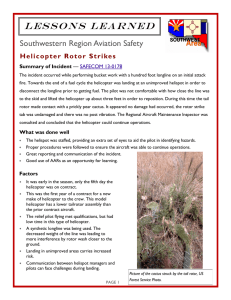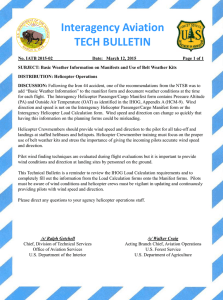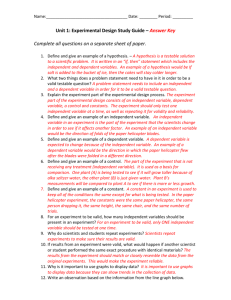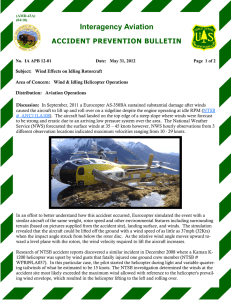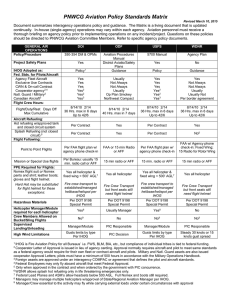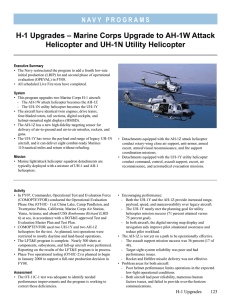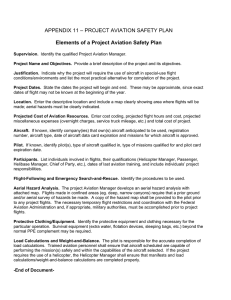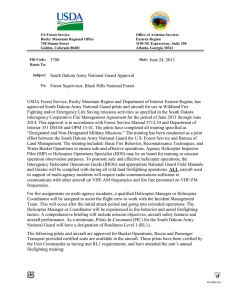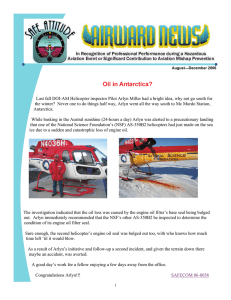L e s s o n s L... Southwestern Region Aviation Safety Summary of Incident
advertisement
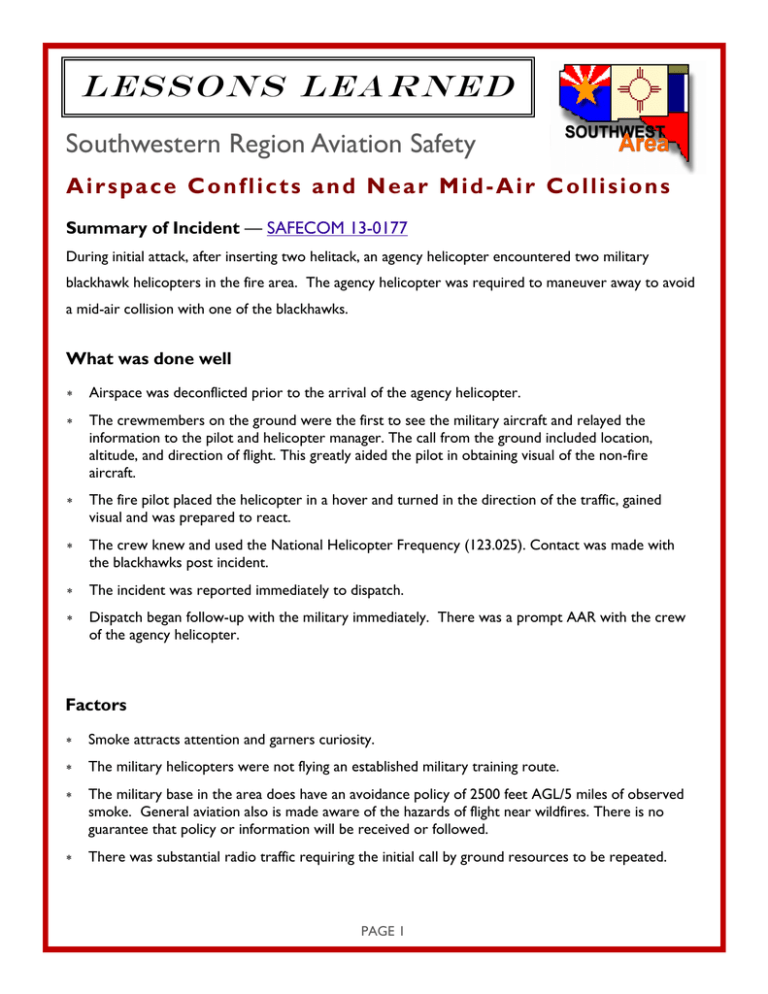
Lessons Learned Southwestern Region Aviation Safety Airspace Conflicts and Near Mid-Air Collisions Summary of Incident — SAFECOM 13-0177 During initial attack, after inserting two helitack, an agency helicopter encountered two military blackhawk helicopters in the fire area. The agency helicopter was required to maneuver away to avoid a mid-air collision with one of the blackhawks. What was done well Airspace was deconflicted prior to the arrival of the agency helicopter. The crewmembers on the ground were the first to see the military aircraft and relayed the information to the pilot and helicopter manager. The call from the ground included location, altitude, and direction of flight. This greatly aided the pilot in obtaining visual of the non-fire aircraft. The fire pilot placed the helicopter in a hover and turned in the direction of the traffic, gained visual and was prepared to react. The crew knew and used the National Helicopter Frequency (123.025). Contact was made with the blackhawks post incident. The incident was reported immediately to dispatch. Dispatch began follow-up with the military immediately. There was a prompt AAR with the crew of the agency helicopter. Factors Smoke attracts attention and garners curiosity. The military helicopters were not flying an established military training route. The military base in the area does have an avoidance policy of 2500 feet AGL/5 miles of observed smoke. General aviation also is made aware of the hazards of flight near wildfires. There is no guarantee that policy or information will be received or followed. There was substantial radio traffic requiring the initial call by ground resources to be repeated. PAGE 1 Lessons Learned Southwestern Region Aviation Safety Airspace Conflicts and Near Mid-Air Collisions Recommendations and Take-Aways Consider requesting a TFR immediately once aircraft are assigned to a fire. When near a fire, announce aircraft position in the blind over National Public Helicopter Frequency. On busy fires, consider using Air Guard (168.625) to transmit time sensitive, critical safety information. Air Guard is programmed as priority and will override other radio traffic. Air Guard is authorized for 1) emergency air-to-air communications, 2) emergency ground-to-air communications, and 3) initial call, recall, and redirection when no other frequency is available. If possible, establish radio communication as soon as visual contact is made with non-incident aircraft. Prior to the fire season establish a line of communication with other airspace users. Good discussion points include the possible hazards that are possible around fires areas and the importance of staying clear of fires, whether a TFR is established or not. Also, if there is a need to operate in a fire area, calling out position on the National Helicopter Frequency greatly increases situational awareness. During the fire season maintain the line of communication. Updates on fire activity and aerial resources could help to build a useful picture of the current situation. This as a great example of how to be prepared and what to do in situations like this. From dispatch working to mitigate hazards, the crew members on the ground identifying and communicating, the flight crew acting decisively, and the post incident follow up this was a good example of being prepared for the unexpected. For any questions, comments, or concerns please call Jami Anzalone, Regional Aviation Safety Manager at (505) 842-3351 or Clem Pope, Aviation Management Specialist (detailed) at (505) 842-3354


